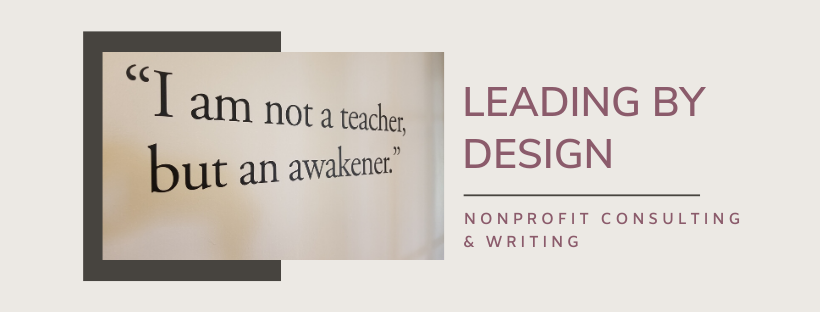THE TERM 'FORWARD GUIDANCE' IS USED BY central banks to influence market expectations about the future levels of interest rates. Banks do this by forecasting where markets will go and communicating their forecasts to businesses, governments, and the public. I can see I've really grabbed your attention now. But wait -- I'm going somewhere with this concept that has related, but not necessarily financial, applicability to the nonprofit sector.
I'm intrigued by the phrase, which I admit I hadn't heard until recently. I'm also intrigued with the idea of 'forward guidance' -- of articulating how something will turn out or could turn out based upon agreed-upon indicators, is (or should be) one critical component of planning for a sector as much as for individual organizational planning.
As the chart above from the banking industry illustrates, forward guidance is a combination of calendar-based indicators and trends and outcome-based indicators and trends. Look where you get the greatest impact -- it's on the outcome-based side the of spectrum, which combines explicit evidence from past performance with forward looking information.
Forward guidance requires organizational leaders to look for and interpret trends and scan the landscape for potential opportunities and pitfalls in order to plot future directions. It requires leaders to have their antennae up beyond the institution's walls, homing in on information and ideas that could be of practical use in thinking about the future.
Forward guidance is about influence and impact. As with the banks and interest rates, it's about shaping public perception and opinion that supports the need for the nonprofits in our lives. It encourages people to get involved and to open their hearts and wallets.
Here's the snag: I think many nonprofit leaders are still more comfortable looking solely at past performance as the predictor of the future (the left side of the chart). It's safe and, well, predictable. We know the cast of variables and the vocabulary. Our ability to forecast solely based on past performance has blindsided more than one nonprofit organization -- cultural organizations come immediately to mind, but I also wonder if education is stuck in this traditional approach despite all the talk about STEM, Common Core, and the electronic classroom.
We nonprofit leaders are woefully unskilled at forecasting using different vocabulary or trickier metrics that focus on consumer/community needs and wants. We rarely receive that sort of training in a classroom; it's rarely demanded of us on the job. Many of us haven't a clue about what to do with future trend information from across our own sectors or from other sectors, especially how to intelligently apply/adapt it in a timely, proactive way.
We may read an article, listen to a TED talk, or attend a session at a professional conference that sheds some light on where our sector is/may be going, yet are many of us taking those perspectives and fashioning them into predictive tools for our boards and staffs to forecast the future? Are many of us assembling forward guidance with the help of our nonprofit colleagues in our own communities or regions?
So, let's think about how we can move from the "least impact" side to the "greatest impact" side of the forward guidance spectrum.
Let me know how you're doing it. I guarantee there are dozens of people anxious to learn from you.
Quick Update: Just read this Nonprofit Quarterly article about 10 trends and 10 predictions for 2014 --- a little forward guidance grist for the mill, perhaps?



Comments